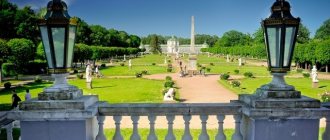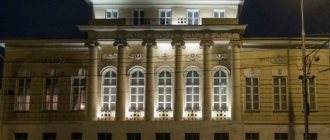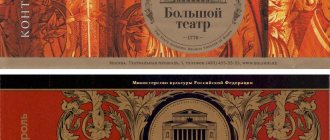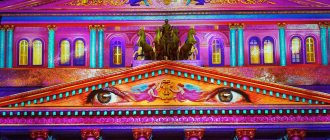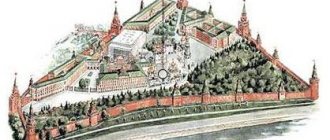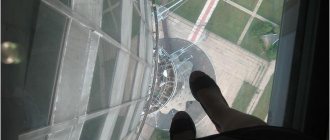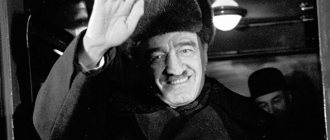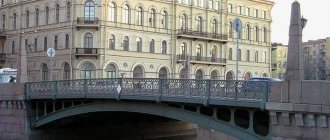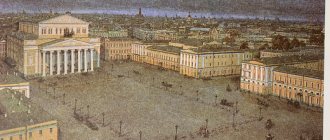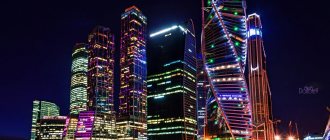The antechamber is famous for its parquet flooring.
Pay attention to the jasper fireplace. Its unusual location - near the window - suggests that the most advanced heating system, a hot-air heater, was used in the palace. The fact is that a year before the foundation of the Grand Kremlin Palace was laid, the Winter Palace in St. Petersburg burned down. And in the BKD, Emperor Nicholas I ordered the installation of a safer heating system. This is how Amosov stoves appeared (named after the inventor, Major General N.A. Amosov) for heating a building using a pneumatic method. The stoves were located in the basement, from where, under high pressure, warm air flowed through ceramic tubes to the top through fireplaces and special “suffocators” - boxes in the walls. The new palace was heated evenly and safely.
S. Prisekin. Whoever comes to us with a sword will die by the sword. 1983
The antechamber is decorated with a painting by Sergei Prisekin “Whoever comes to us with a sword will die by the sword.” It recalls the battle of 1242 on the ice of Lake Peipus - the Battle of the Ice. In the center is Saint Prince Alexander Nevsky. The princely hand does not strike the enemy with a sword, but covers the heart. Like his own heart, Alexander Nevsky defends his state in a just battle for independence. That’s why he said before the battle a phrase that has survived centuries: “God does not lie in power, but in truth.”
If we leave the entrance hall to the main gallery of the stairs, we will meet Dmitry Donskoy on a large historical canvas by the French artist A. Yvon. The date in the picture is September 8, 1380—Battle of Kulikovo. And in the center is the hero of this battle, the holy Grand Duke Dmitry Donskoy, who was not only a warrior. In 1367, he built our first stone Moscow Kremlin, which before that was wooden, made of oak.
And our capital began to be called White Stone.
Story
The Grand Kremlin Palace was created as a symbol of imperial power and a monument to the Russian army and weapons. This was necessary for Nicholas 1, whose kingdom was overshadowed by the Decembrist uprising. According to the autocrat, the new unusual building fully met the objectives.
The architecture clearly traces the traditions of Byzantium. This, according to the creators, should emphasize the continuity and inviolability of the power of the Russian emperor. A series of halls dedicated to Russian weapons and victories of the troops showed the strength of the state. The palace was built by the architect Ton. It took almost 10 years to complete the work.
Early palace buildings
The palace of early times was built according to the custom of the princely mansions of that time. These were separate buildings that were connected by winding passages.
The buildings had a tiered structure:
- the first (lower) was intended for servants
- the second one received visitors
- third (upper) – the princely chambers themselves
It was the third tier that was called the tower.
XII-XV century
The studies carried out suggest what the building looked like at different times:
- In the 12th century, princes used the wooden building for temporary residence. This house was located between the modern Borovitsky Gate and the Church of the Nativity of John the Baptist.
- In the 13th century, the Moscow Principality strengthened its position. The residence was located on the eastern outskirts of the Kremlin. At the same time, the Church of the Savior on Bor was built, but demolished in the 30s of the twentieth century.
- In the 14th century, Ivan Kalita built the first palace on Borovitsky Hill. It was a cramped mansion of their tree. At the same time, Kalita rebuilt the Church of the Savior, the church became stone. And around the cathedral, by order of the prince, a monastery moved from Danilov was formed.
- In the 15th century, Dmitry Donskoy and his son Vasily Dmitrievich changed the appearance of the palace. The building became rich, the roof was gilded. A curiosity was installed in the yard - a clock. 2 house churches were built in the vestibule: the Nativity of the Virgin Mary and the Annunciation Cathedral. They determined the size of the palace of that time.
Period of the Moscow State
During the formation and strengthening of the Moscow state, the building was completed and rebuilt several times:
- Ivan III ordered the construction of the Dining Room, Embankment, Middle Golden and Faceted Chambers
- Boris Godunov built the Reserve Palace
- the first tsar of the Romanov dynasty, Mikhail Fedorovich, completed the Armorial Gate and Tower
- a palace and chambers were built for Tsarina Natalya Kirillovna and the princesses
The last modification of this period is the Embankment Garden, laid out on the roof of the Reserve Palace.
Early 18th century
In 1712 the capital moved to St. Petersburg. Officials were housed in part of the building. The rest did not receive proper care. The buildings fell into disrepair and often burned. During Anna Ioannovna’s visit to Moscow, her courtiers lodged in the building. The empress quickly appreciated the inconvenience of the building. On her orders, Rastrelli built the Winter Annenhof. But after the Summer Annenhof appeared in Lefortovo, the Winter Annenhof was moved there.
- Sights of the Moscow Kremlin and Red Square
- 20 most beautiful places in Moscow
- 30 best things to do in Moscow for kids
Rastrelli's Winter Palace
Elizaveta Petrovna often came to Moscow. She quickly realized that living in the Grand Palace during the cold season was inconvenient. Therefore, she commissioned Bartolomeo Rastrelli to build a room suitable for winter living. Fortunately, the main ensemble was preserved. But to implement the plan, the Embankment and the Middle Golden Chamber had to be demolished. Rastrelli's baroque complex was remodeled several times, but it never became suitable for living in cold weather.
Grand Kremlin Palace Bazhenov
At the end of the 18th century, Catherine the Great decided to rebuild the building. She received the implementation of the project from Bazhenova. The architect came up with an amazing plan. The palace and the Kremlin were to become a single structure. It was supposed to go down to the embankment in terraces. The price of such a large-scale project was enormous: 30,000,000 rubles.
For clarity, Bazhenov made a model. Its dimensions were 10x17 meters. No one has done this before. Now fragments of this model are kept in the Shchusev Museum of Architecture. But the population was not happy about such changes. When they began to dismantle the Kremlin wall, angry Muscovites began to attack Bazhenov. They demanded that construction be stopped.
Nature itself also seemed to be against it. In 1771, a plague broke out in Moscow. The epidemic was followed by a riot. Construction was temporarily stopped. The following year, work resumed. They dug a huge pit. But there was no money in the treasury. Therefore, after 4 years, the Empress ordered the foundation pit to be filled up. The architect was offended. He withdrew from the construction of the facility.
Pre-revolutionary era
The next architect to work on the project was Ton. He worked on it for almost 10 years. Thon was able to combine the ideas on which the building was built over the course of 500 years. Nicholas 1 personally supervised the project, his signature is on every drawing. Unfortunately, the emperor was not able to live in the new residence: he died earlier. The construction turned out to be impressive. The buildings united around the courtyard. There are a total of 700 rooms in the building.
5 are named after Russian orders:
- Georgievsky
- Andreevsky
- Vladimirsky
- Ekaterininsky
- Alexandrovsky
The palace stretches along the Moscow River for 125 meters. The facade was decorated with bas-reliefs with the coats of arms of the Russian Empire and its possessions. The height of the building is 37 meters. Surprisingly, the building has 2 floors, and there are 3 rows of windows on the facade. This is the idea of the architect Ton. So he achieved excellent lighting of the room. The southern part is the personal chambers of the imperial family.
They consisted of:
- bedrooms
- office
- living room
- boudoir of the empress
- dining room
Before the October Revolution, the imperial apartments were restored and regularly updated: The Terem Palace was restored. During the work, furniture was replaced, oak window frames were inserted, and wall paintings were updated. Everything was done according to supposed 17th century standards. Unfortunately, due to the lack of in-depth study, the appearance of Terem has not changed for the better.
The facade and interior were updated annually: primed and painted. Work was carried out to preserve the ermine curtains of the thrones. They poisoned insects and animals. At the end of the 1980s, temporary illumination was organized. Cables were laid from Raushskaya embankment from the power plant. Constant electric lighting was installed in the late 90s of the nineteenth century.
At the beginning of the 20th century, sewerage was installed into the building. In 1913, the Grand Kremlin Palace hosted a celebration of the 300th anniversary of the Romanov dynasty. Significant funds were allocated from the treasury to carry out the work. In 1917, the imperial residence entered into excellent condition.
- Churches, cathedrals and temples of Moscow - 23 main shrines
- 25 best excursions in Moscow
- 22 best Moscow parks for walks
Seat of the Soviet government
During the October coup, the building was damaged by shelling. Part of the destroyed wall could not be restored. But the general condition of the structure turned out to be satisfactory. A year later, the Soviet government moved to Moscow. It was decided to turn the palace into an official residence.
Despite the protests of artists, historians, architects and People's Commissar Lunacharsky personally, the building housed offices of government members and apartments for the families of party workers and service personnel. Due to the fact that the premises were used to store evacuated rarities, part of the building was free from barbaric exploitation.
True, some interior details were lost forever: the ermine canopy was moved to a thrift store. Interest in the heritage of the emperors of the Romanov dynasty was high. Tours began to be taken to the building where the Soviet government worked. The first guests visited the former royal residence at the beginning of 1919.
Reconstruction
Already in 1934, a decision was made about another reconstruction. Her goal was to organize a canteen for deputies of the party congress. To implement the plan, the Red Porch was demolished. To make way for the construction of a hotel, the Church of the Savior on Bor, built in the 14th century, was destroyed.
In the same 1934, it was decided to unite the Alexander and St. Andrew’s halls. The architect Ivanov-Shits took on the implementation of the plan. He was the only one who agreed to carry out the blasphemous reconstruction. The workers also refused to dismantle the partitions. The military was brought in for this. The workers of the museum complex were able to preserve some interior details. A panel from the wall of St. Andrew's Hall has survived.
The work was carried out in violation of building codes. Therefore, after their completion, the facade became covered with cracks. The collapse was prevented by building a balcony. Instead of the imperial thrones, a statue of Lenin was erected. Unfortunately, the 1,600-seat hall turned out to be uncomfortable. The last rows were located so far from the oratory that the deputies often did not hear the speaker. Subsequently, the hall was radio-wired. This partially solved the problem.
Palace during the Great Patriotic War
The Kremlin ensemble stood out too much against the background of other buildings in Moscow. After the start of the Great Patriotic War, the garrison began to prepare to camouflage and protect the fortress from air raids. Unfortunately, not all events were successful. A shell weighing 100 kilograms damaged the entrance, part of the Own Half, windows and a door.
A bomb weighing 250 kilograms flew into the St. George's Hall, damaged the ceiling and beams, but did not explode, but crumbled when it came into contact with the floor. The garrison regularly extinguished landmines that fell on the territory. During this difficult time, the government still worked in its offices.
A reception was given in the building in honor of the participants in the historical Victory Parade, which took place on Red Square in June 1945. For this purpose, the premises of the Faceted Chamber, the Vladimir Hall, the St. George Hall, the upper and lower dining rooms, and the Holy Entrance Hall were used.
- Sights of Moscow
- What to see in Moscow first - 16 most interesting places
- Where to go on a weekend from Moscow by car - 14 most interesting places
Restoration of historical appearance
Fortunately, the technologies of the 20th century made it possible to restore the historical appearance lost during the works of the 19th century. After the research, the following were returned:
- original wall paintings of Terems
- updated inlay
- furniture upholstery replaced
- the main staircase has been restored
After the collapse of the USSR, the first President of Russia, Yeltsin, ordered the restoration of the original appearance of the Alexander and St. Andrew's halls, united in the 30s. Instead of the Lenin statue, the thrones of the imperial family have been returned. Such a large-scale reconstruction became possible thanks to the drawings preserved in the archives. The façade of the palace, facing the Moscow River, was restored to its original appearance. It is again decorated with bas-reliefs with the coat of arms of Russia, knocked down at the beginning of the 20th century. The rooms on the 1st floor were the last to be restored. This happened in 2008.
Assumption Cathedral
The Assumption Cathedral was built in 1475-1479 by the Italian architect Aristotle Fioravanti by order of the Grand Duke of Moscow Ivan III. The Assumption Cathedral in the city of Vladimir was taken as a model.
For six centuries, the cathedral occupied a cult place in the life of the state - here they crowned emperors, crowned emperors, performed royal weddings, elevated bishops, metropolitans and patriarchs to the rank of bishops, announced the most important state acts, and celebrated military victories with solemn prayers. In the 14th – 17th centuries, metropolitans and patriarchs were buried here. There are 19 burials in the tomb of the Assumption Cathedral.
Coronation of Nicholas II in the Assumption Cathedral
The last coronation in the Assumption Cathedral took place in 1896, when the last Russian Emperor Nicholas II and his wife Alexandra Feodorovna were crowned.
Construction
The first princely tower appeared on the site of the modern palace in the 14th century under Dmitry Donskoy. The only clock in Moscow was installed on it, which was perceived as a foreign curiosity, and the roof was covered with gilding. The tower was replaced by the grand ducal stone chambers, erected under the leadership of the Italian architect Aleviz Fryazin. Construction began in 1499 under Ivan III, and was completed in 1508 under his son Vasily III.
In 1730, Tsarina Anna Ioannovna contributed to the reconstruction of the chambers. Wooden apartments in the Baroque style, called the “Winter Annenhof”, were built on the old basement. Elizaveta Petrovna, who ruled after her, increased the area of the building in 1752. The new residence, externally similar to the Great Peterhof Palace, was called the “New” or “Winter Palace”. Under both queens, work was carried out according to the designs of architects K.B. and F.B. Rastrelli (father and son).
Catherine II, who replaced Elizabeth, felt that the palace was outdated and did not have a sufficiently majestic appearance. It was decided to build a grandiose structure, occupying the entire riverine area and covering Borovitsky Hill. In 1768, the architect V. Bazhenov made a model. In accordance with the plan, space was cleared for construction by demolishing the building of orders, several ancient churches and part of the Kremlin wall with the Tainitsky Gate, Petrovskaya, First and Second Nameless Towers.
In 1773, the first stone was solemnly laid and construction began. However, in 1774 it was stopped, recognizing the project as expensive and untenable. There was no money in the treasury; the plague epidemic (1771) and the Russian-Turkish war (1768-1774) had an impact. In addition, during the excavation work, the nearby Archangel Cathedral cracked and almost collapsed; it was urgently necessary to prop up the walls.
The foundation was partially dismantled, and a modest Senate building was built instead of a grandiose structure. The demolished part of the Kremlin wall with towers was restored. The facades and interiors of the old palace were updated, a mezzanine and a portico were added. In 1812, in honor of the victory in the Patriotic War, it was decided to erect the majestic Cathedral of Christ the Savior near the Kremlin. Along with this, the question arose about updating the architectural ensemble inside the Kremlin with the construction of a new palace and the preservation of ancient Kremlin buildings.
In 1837, Nicholas I set this task to the architect K. Ton, the author of the project for the Cathedral of Christ the Savior. He began to implement it together with a team of architects and artists, which included: F. Solntsev, P. Geresimov, F. Richter, N. Chichagov, I. Kaminsky. In style, the new building was supposed to repeat in many details the Kremlin Teremnoy and its enlarged version, the Kolomna Palace. Construction under the leadership of Chamberlain L. Bode began in 1838. In April 1849, on Easter, Metropolitan Philaret consecrated the palace in the presence of the Tsar.
- Moscow hotels with swimming pool
- Moscow hotels with spa center
- Moscow hotels with panoramic views
- Moscow hotels near Red Square
How to get there
The State Kremlin Palace stands in the western part of the Moscow Kremlin. They reach it through the territory of the Alexander Garden, the squat Kutafya Tower and the Trinity Bridge. And the entrance to the Kremlin territory can be reached on foot from the Moscow metro stations “Alexandrovsky Sad”, “Lenin Library” and “Borovitskaya”.
View of the palace from the Arsenal
The lobby of the Borovitskaya metro station is located closest to the Palace of Congresses. From there you need to walk along Borovitskaya Square to the intersection with the street. Manezhnaya, and then walk along the Alexander Garden to the Kutafya Tower. The journey from the metro takes 10-12 minutes.
Attraction rating
Rating 4.00 [5 Vote(s)]
| ← KREMLIN PALACES | MOSCOW KREMLIN → |
Architecture
The constructed Grand Kremlin Palace included a complex of buildings consisting of the palace itself and ancient buildings dating back to the 14th – 17th centuries: the Faceted and Golden Tsarina Chambers, the Terem Palace, and nine churches. In 1851, the Armory Chamber and apartments were added to it, connected to the palace by a gallery. Next to the main entrance is a magnificent marble vestibule, the vault of which is supported by four polished columns of gray Karelian granite.
The building faces the Moscow River with its main façade. Its length is 125 m, height 47 m, area is 25 thousand m². The rectangular building with a courtyard has two floors, although it appears to be three floors due to the two tiers of windows on the second floor. The first floor protrudes slightly forward, the basement is faced with dark granite, above which there are large arched windows. The tiers of the second floor are separated by pilasters. The windows, made in the style of the 17th century with narrow double pointed arches separated by figured weights, are decorated with carved white stone platbands.
In the center above the roof there is a stand with kokoshniks, fenced with a gilded balustrade, and next to it on the platform there is a flagstaff. Before the revolution, kokoshniks had double-headed eagles and coats of arms of major Russian cities. On two sides of the figured roof there are clocks, on the other two there are bells (now inoperative). In architecture, for the first time, such modern solutions as large spans covered with metal structures were used, and previously unknown cement was used when laying walls.
Own half
In the southern part of the Kremlin Palace there is a residential part of the building. Here, in the so-called “Own Half,” were the chambers of the emperor and empress. The suite consists of six main rooms:
- The Empress's bedchamber is luxuriously furnished and exquisitely decorated. The design mainly uses two colors - blue and gold. An atmosphere of peace and piety prevails here
- In the Empress's boudoir (the lady's morning room) there is one of the most beautiful fireplaces in the palace, decorated with polished malachite plates. Overlaid gilded details in the form of beads, garlands and rosettes give it a special sophistication
- The Empress's office was decorated at the request of its first owner, Empress Alexandra Feodorovna, in the boule style (named after a 17th-century furniture maker). Here, a special type of inlay was used in the decoration of furniture and doors, when plates of tortoiseshell and copper were placed on a wooden base. The upholstery made of fabric with gold thread is also magnificent.
- The Empress's living room is snow-white with gold trim. Eight plaster bas-reliefs are symbols of art, another four depict the seasons. The main decoration of the room is a unique pineapple chandelier, a symbol of hospitality and cordiality.
- The dining room is decorated in a traditional classic style. Stucco ornamentation on the vault, white and yellow marble in the decoration of the walls, in the niches there are marble vases with ancient subjects, sculptures of Leda, the beloved of Zeus and the god of marriage Hymen.
Palace today
Currently, it is the current residence of the President of the Russian Federation. Official events take place here:
- awards are presented in St. George's Hall
- inauguration takes place in St. Andrew's Hall
The historical and architectural monument is open to visitors. But you can only get here with a guided tour upon prior request. Date and time of visit may be changed due to official events.
Available for guests:
- Terem Palace
- Faceted Chamber
- Own half
- Golden Tsarina Chamber
- emperor's office
- state halls (except Catherine's)
Content
- 1 Background 1.1 The first palaces of the Moscow kings (late 15th-17th centuries)
- 1.2 Imperial residences (1712–1838)
- 5.1 St. Andrew's Hall
Halls
The Palace has about 700 rooms, designed with impeccable taste and originality. These are the front, service, reception, living quarters of the royal family, servants, and courtiers. The interior combines different styles: Renaissance, Baroque, Rococo, Classicism, Russian-Byzantine. Service premises (kitchen, servants' rooms, etc.) were located in the basement.
The first floor was occupied by the emperor and his family, the adjutants on duty, and courtiers; there were also storerooms and dressing rooms. The second floor was intended for crowded receptions, balls, and special events, which took place in richly decorated state rooms. The most famous: Andreevsky, Vladimirsky, Georgievsky, Alexandrovsky, Ekaterininsky, have names associated with Russian orders. For the upholstery of each room, fabrics of a certain color were used, made specifically for the interiors of the palace. A luxurious staircase made of Revel stone leads to the second floor.
Five-meter doors, made of valuable wood, skillfully inlaid with mother-of-pearl and tortoiseshell inserts, and decorated with unique carvings. The magnificent interiors are complemented by crystal chandeliers with original pendants, mirrors in gilded frames, three-meter porcelain vases, marble and malachite fireplaces.
St. Andrew's Hall
The hall is named in honor of the Order of the Apostle Andrew the First-Called - the most prestigious award of the Russian Empire since the time of Peter I. Its second name is the throne room. It was considered the main one, here the emperor received congratulations after the coronation, and the most solemn events took place. The magnificent room is located along the southern facade, light enters through 18 two-story windows. The hall is divided into three naves by five pairs of tetrahedral columns.
Along the eastern wall of the wide central nave, under a canopy of ermine and gold brocade, are three thrones. Above the canopy is the Russian coat of arms with the inscription “God is with us,” and above is the all-seeing eye, a symbol of the life-giving Trinity. The columns and lampshades are covered with gilded ornaments, the walls are upholstered in moire silk, decorated with titular coats of arms and bronze candelabra. In the hall there are two incredibly beautiful fireplaces made of jasper, which has a unique purple hue.
Alexander Hall
The hall is dedicated to the Order of Alexander Nevsky, which has been awarded since 1725. It has dimensions: 31*21 m and 20 m in height. The gilded hemisphere of the dome is decorated with order crosses, stars, images of a double-headed eagle and the letters “SA”, which means St. Alexander. The walls are decorated with pink marble, the chairs are upholstered in red velvet to match the color of the order's ribbon. On the walls are depicted the coats of arms of the lands of the empire, the coat of arms of the Romanov dynasty. In the upper niches above the doors there are six canvases by the artist F. Moller on the theme of military exploits, the life of the Grand Duke and his adoption of monasticism.
Vladimirsky Hall
The hall owes its name to the Order of St. Vladimir - Baptist of Rus', established in 1782. It has dimensions of 16*16 m and an original shape resembling a rounded octagon. The walls are lined with marble panels.
Daylight comes through a huge hipped dome with a glazed opening at the top; at night, the hall is illuminated by a three-ton chandelier made of gilded bronze. The dome is decorated with bas-reliefs of the order. The hall is located in the middle of the building and is the connecting link between the old and new parts of the palace. It has several doors leading to the St. George's Hall, as well as to the Golden Tsaritsyna and the Faceted Chamber, the Terem Palace.
St. George's Hall
The Hall of Military Glory is associated with the Order of St. George the Victorious, established in 1769. It is the largest in the palace: its length is 61 meters, its height is 17 m, and its area is 1250 m². On the walls there are marble tablets with the names of 10 thousand Knights of St. George, incl. A. Suvorov, M. Kutuzov, P. Bagration, F. Ushakov, P. Nakhimov and the names of 545 distinguished military units.
Along its entire length there are twisted columns with female statues, symbolizing the victories of the Russian army. The room is illuminated by six bronze chandeliers, each weighing 1,300 kg, and 40 wall sconces. Their light is reflected in the parquet, made from 20 types of valuable wood. In the hall there are 2 white marble fireplaces, on which there is a bronze clock with a sculpture of St. George the Victorious - on one, and a miniature monument to Minin and Pozharsky - on the other.
Own half
Its own half, located on the 1st floor, was intended for the residence of the royal family. It consists of seven residential and four passage rooms for duty and meetings with courtiers. The residential premises include: boudoir, offices of the empress and emperor, dining room, living room, reception room, bedrooms. They are decorated with luxury and taste, while at the same time maintaining a homely atmosphere.
The rooms are decorated with porcelain vases, floor lamps, figurines, elegant clocks, and mirrors. Each room has its own color and interior solutions. Despite the fact that the rooms are made in different styles, they represent a single ensemble.
Catherine Hall
The 21 m long hall was named after the Order of St. Catherine, which has been awarded to outstanding women since 1714. In the hall there was the throne of the empress (now it is not there) under a red canopy. The parquet, doors and walls of the hall are decorated with images of the order. At the entrance there are pilasters inlaid with malachite, the walls are upholstered in light gray moiré. The hall is illuminated by bronze chandeliers and crystal candelabra.
Museum of Russian Palace Interior
The complex has 700 premises for various purposes. There are five halls for presenting orders, and there are countless reception rooms in the Front Half, as well as service rooms. The front hall with its festive staircase reflects the luxury of the best ceremonial decorations. There is also one's own half.
The interiors of the halls are made in an eclectic style. Here, details of the Renaissance era are organically woven into elements of Byzantine and Russian stylistics. The ceremonial interiors are luxurious, made with high quality and taste.
Excursions
The palace is not a museum, so visits are allowed only a few times a month. To do this, you must pre-register no earlier than 30 days in advance, indicating your passport details and make payment in advance through a travel agency or the Internet. The group consists of 20-25 people, the excursion is conducted only on weekdays in the morning (usually gathering at 10 a.m.), lasts one and a half hours.
Visitors are subject to thorough searches before entering the palace. Taking photographs and filming with a camera is only allowed in certain permitted areas. The state halls (except for Catherine's), the Terem Palace, and the Chamber of Facets are available for inspection.
Cathedral Square
Cathedral Square is the oldest square in Moscow; it arose at the beginning of the 14th century and was the main Kremlin square. There are architectural monuments on it: the Assumption, Archangel and Annunciation Cathedrals, the Bell Tower of Ivan the Great, the Chamber of Facets.
Cathedral Square remembers many of the most important aspects of the life of Russian sovereigns: royal weddings, marriage ceremonies, funeral processions, receptions of foreign ambassadors. The country's main Christmas tree is being installed on Cathedral Square.
Grand Kremlin Palace on the map
- Galleria Borghese is one of the most expensive museums in Rome
- Holidays in Montenegro all inclusive
- Penang Island – how to get there and what to see
- Holidays in the Dominican Republic with children
- Canyonlands National Park
- Cuba hotels 3 stars all inclusive
- Tours to Belek (Turkey) for 7 nights, 2 adults + 1 child, GORGEOUS 5* hotels, ultra all inclusive from 114,040 rubles for THREE – July
- Prague Castle - the symbol and pearl of the Czech Republic
- Where to go for New Year by car - 11 best destinations
- What to bring from Barcelona
- Where to relax by the sea in autumn - 20 best destinations
- What to bring from Turkey
+2
Notes
- Grand Kremlin Palace Archived copy from March 4, 2021 on the Wayback Machine
- Grand Kremlin Palace
- Grand Kremlin Palace
- article from the Humanitarian Dictionary - ↑ 123
Architectural Monuments, 1983, p. 339. - Fiftieth anniversary of the Moscow Kremlin Palace // Builder's Week. - 1899. - No. 16. - P. 126.
- ↑ 12
M. Korf. Notes. M.: Zakharov, 2003. Pp. 461-463. - Spring voices on the website ruskino.ru
Bell tower Ivan the Great
Ticket price: 350 rub. Opening hours: daily, except Thursday, during sessions: 10.15, 11.15, 13.00, 14.00, 15.00, 16.00, 17.00 from May 15 to September 30.
The architectural ensemble of the Ivan the Great Bell Tower includes buildings from different periods: the pillar of the Ivan the Great Bell Tower, the Assumption Belfry and the Filaret Annex.
The 60-meter-high bell tower was built in 1505–1508 by the Italian architect Bon Fryazin on Cathedral Square instead of the white stone Church of St. John the Climacus. Hence the name of the bell tower - Ivan the Great, great because of its size. The dimensions of the bell tower were increased to 81 meters by decree of Boris Godunov at the end of the 16th century - a third tier was added. It was the tallest building in Rus' for two centuries. In 1812, French troops tried to blow up the bell tower; the Assumption Belfry and Filaret's annex were destroyed and rebuilt in 1814–1815.
Now the bell tower houses a museum of the history of architecture of the Moscow Kremlin. Climbing to an open area 25 meters high (137 steps) you can admire views of the Moscow Kremlin.
Tsar Cannon
The Tsar Cannon is the largest cannon in the world, which is why it received its name. It was made in 1586 at the Moscow Cannon Yard by Andrei Chokhov on the orders of Tsar Fyodor Ivanovich. Its weight is 40 tons, carriage - 15 tons, core - 1 ton, barrel length - 5.34 meters, barrel caliber - 890 mm. The bronze barrel of the cannon is decorated with ornaments, memorable inscriptions and an equestrian figure of Tsar Fyodor Ivanovich.
Not a single shot was fired from the Tsar Cannon in its entire history. The four cast iron cannonballs stacked at its foot, like the gun carriage, were cast in 1835 and are decorative in nature. The Tsar Cannon is listed in the Guinness Book of Records as the weapon with the largest caliber.
Cathedral of the Archangel
The Archangel Cathedral was built in 1505–1508 by the Italian architect Aleviz Novy. The cathedral became the royal tomb; there is a necropolis of 56 burials. The buried rest in white stone sarcophagi, lowered into the ground under the floor of the Archangel Cathedral. The tombstones were made of brick, with white stone slabs. At the beginning of the twentieth century, tombstones were enclosed in brass glazed cases with applied crosses and inscriptions.
Tomb of the Archangel Cathedral
The great princes Rurikovich and the Romanov kings rest here. Peter I stopped the custom of his ancestors: he built a new tomb in the city of St. Petersburg, which he created - emperors and empresses began to be buried in the Peter and Paul Cathedral of the Peter and Paul Fortress. Peter I became the first sovereign to be buried in it. The exceptions are the young Emperor Peter II - who fell ill and died in Moscow, he is buried in the Archangel Cathedral and the overthrown Emperor John VI, who was killed while trying to be liberated from the Shlisselburg fortress, most likely his remains were buried there.
For women of the grand ducal and royal families, the Ascension Cathedral of the Ascension Monastery, created in 1386 on the territory of the Kremlin by the wife of Dmitry Donskoy, Princess Evdokia, served as a tomb. The cathedral building was rebuilt several times, the last building was externally similar to the Arkhangelsk. Mothers, wives and daughters of tsars and grand dukes rested here - Sofia Paleolog, Elena Glinskaya, Anastasia Romanovna, Irina Godunova, Maria Miloslavskaya, Natalya Naryshkina and many others. After Easter services, the sovereigns went to bow first to the graves of their mothers - in the Ascension Cathedral, then to the graves of their fathers - in the Archangel Cathedral.
The building of the Military School named after the All-Russian Central Executive Committee
In 1929, the Ascension Monastery was blown up along with the Chudov Monastery and the Small Nicholas Palace. In their place, in 1934, the building of the Military School named after the All-Russian Central Executive Committee (14th building of the Kremlin) was built in a neoclassical style, combined with the neighboring buildings of the Senate Palace and Arsenal. In 2021, this building was completely dismantled, and now there is a park in its place.
During the destruction of the Ascension Monastery, about 70 sarcophagi with princesses and queens were moved to the dungeon under the southern extension of the Archangel Cathedral. Now there is an exhibition “The Ascension Monastery in the Moscow Kremlin”, where you can see preserved icons and church objects from the Ascension Monastery.
The Tsar Bell
The Tsar Bell was cast in 1733–1735 by order of Empress Anna Ioannovna by Moscow foundry masters Ivan Motorin and his son Mikhail. The weight of the Tsar Bell is almost 202 tons, height is 6.14 meters, diameter is 6.6 meters. This is the largest bell in the world, it has never been used for its intended purpose - it has never rung.
The casting and molding of the bell took place in a special pit on Ivanovo Square in the Kremlin. During the Moscow fire in 1737, a piece of the bell broke off. The bell was pulled out of the pit only in 1836 by the architect Auguste Montferrand, who developed the design of the lifting device. It was installed on a special stone pedestal, where it is still located.
The Tsar Bell is interesting not only for its enormous size, but also for its unique decor. It is decorated with high relief portraits of Tsar Alexei Mikhailovich and Empress Anna Ioanovna, as well as images of saints, angels, floral patterns and inscriptions about the history of the creation of the bell.
